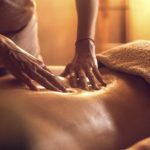5 Myths of Tendon Injuries
1. I’m injured because I “did too much”
We’ve all heard the phrase, “use it or lose it”. Tendons need to be loaded regularly to maintain their structural integrity. Tendon dysfunction occurs when there is an imbalance in the loads placed on a tendon and its capacity to cope with those demands. Different types of exercise can either strengthen the tendon structure or challenge it, and a well-designed exercise regime balances out these factors according to individual needs. For example, high impact activities such as running or jumping impart stress on lower limb tendons. How much running and jumping a tendon can manage will depend on what loads it has been taught to manage in the weeks and months prior, and can vary considerably.
Overloading a tendon may also be due to inadequate recovery time between stressful loads for the individual. The underlying problem is often a reduction in the tendon capacity, which may have dropped due to inactivity from illness, holidays or during off-seasons from sport. Or, perhaps a lack of strength training to complement an active lifestyle. Metabolic and hormonal factors influence tendon capacity, as can certain medications and lifestyle factors.
A Physiotherapy assessment can help identify underlying causes of tendon dysfunction. We look to adjust the types of loads across the week, with an aim to optimise tendon capacity and avoid deconditioning.
2. Resting it will make it get better
Tendons adapt to the demands placed upon them. Exercise stimulates the tendon to reinforce itself in directions required by the task. At the microscopic level, regular runners will have different tendon structures to athletes of pivoting, direction-change sports such as soccer and netball.
Resting a tendon removes this stimulation, which results in randomisation of the structural supports and an overall weakening of the integrity and performance of the tendon. Therefore, resting completely until discomfort has subsided will make the tendon more vulnerable to re-injury for a period of time. An easy rut to fall into is called a “boom-bust cycle”. For example, a soccer player with achilles tendon pain who rests completely in between game days, is relying on a short-term coping mechanism that results in a steady worsening of tendon pain and performance across a season.
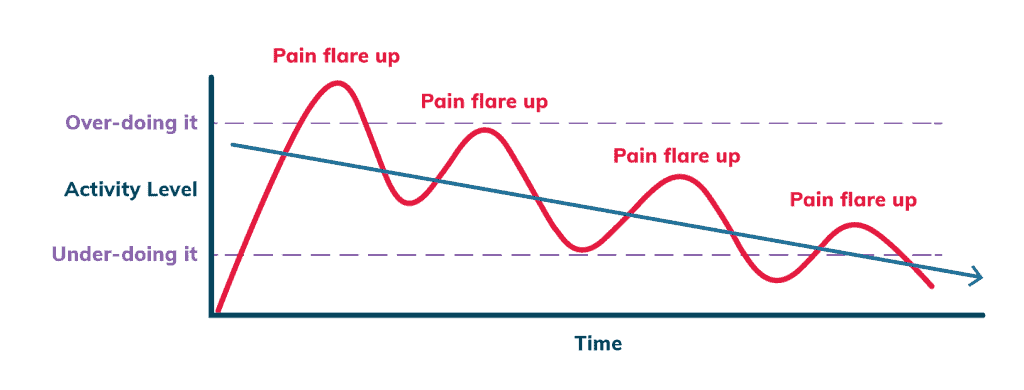
(Source: https://aci.health.nsw.gov.au/chronic-pain/brain-injury/fatigue/boom-and-bust)
In incidents where there is a high-grade injury or a rupture, rest may be compulsory and unavoidable. However, for most concerns a rehabilitation program that places careful load through the tendon can help preserve and develop its integrity. A Physiotherapy assessment can help identify what type and level of activities are appropriate to best aid recovery.
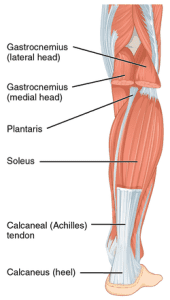
3. Stretching helps
Stretching places a compressive load on the tendon fibres, through the elongation of the structure itself and by pressing it against the bony attachment. Compressive loads are a known cause of stress to tendons, so for most people experiencing acute tendon dysfunction our advice is to avoid excessive stretching.
(Source: https://en.wikipedia.org/wiki/Achilles_tendon#/media/File:1123_Muscles_of_the_Leg_that_Move_the_Foot_and_Toes_b.png)
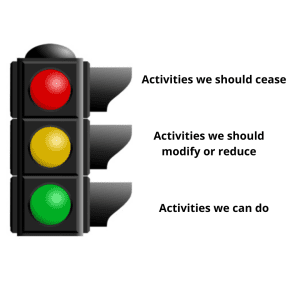
4. I should avoid any pain
Tendons that are in a state of dysfunction will often cause some pain during exercise, which does not necessarily relate to what state of disruption the tissues are in. Pain also does not necessarily mean that exercise is harmful, especially when we know resting from activity will promote further vulnerability. The devil is in the detail! A Physiotherapist will be able to guide you through what sorts of discomfort are allowable versus what indicates a need to back off from certain types of exercise in your program.
5. Tendons heal up like muscles
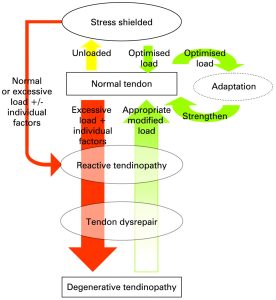
Tendons behave quite differently to muscles in the injury healing process.
Furthermore, the experience of symptoms and function of the muscle-tendon unit can markedly differ from what it looks like at the tissue level. Some injuries will resolve completely without any visible evidence on scans, others will have degenerative changes that are permanent. Some people have wear and tear visible in their tendons for months or years before they experience any symptoms. What we know in these situations, is by strengthening the capacity of the tendon around the problem site, overall tendon function can be restored.
(Source https://www.physio-pedia.com/Tendon_Pathophysiology)
If you are suffering from a tendon injury, please get in touch with our friendly team today to see one of our experienced Physiotherapists, or book your assessment online here.
Comin, J., Cook, J. L., Malliaras, P., McCormack, M., Calleja, M., Clarke, A., & Connell, D. (2013). The prevalence and clinical significance of sonographic tendon abnormalities in asymptomatic ballet dancers: a 24-month longitudinal study. British Journal of Sports Medicine, 47(2), 89-92. doi:10.1136/bjsports-2012-091303
Cook, J. L., & Purdam, C. (2012). Is compressive load a factor in the development of tendinopathy? British Journal of Sports Medicine, 46(3), 163-168. doi:10.1136/bjsports-2011-090414
Cook, J. L., & Purdam, C. R. (2009). Is tendon pathology a continuum? A pathology model to explain the clinical presentation of load-induced tendinopathy. British Journal of Sports Medicine, 43(6), 409-416. doi:10.1136/bjsm.2008.051193
Silbernagel, K. G., Thomeé, R., Eriksson, B. I., & Karlsson, J. (2007). Continued sports activity, using a pain-monitoring model, during rehabilitation in patients with achilles tendinopathy: a randomized controlled study. American Journal of Sports Medicine, 35(6), 897-906.
Tardioli, A., Malliaras, P., & Maffulli, N. (2012). Immediate and short-term effects of exercise on tendon structure: biochemical, biomechanical and imaging responses. British Medical Bulletin. doi:10.1093/bmb/ldr052
Wang, J. H. C. (2006). Mechanobiology of tendon. Journal of Biomechanics, 39(9), 1563-1582. doi:http://dx.doi.org/10.1016/j.jbiomech.2005.05.011






